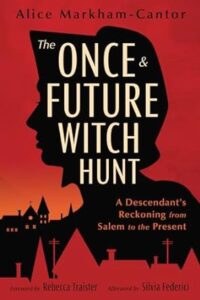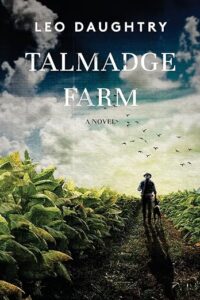If you’re like most Americans, you know a little about the Salem witch trials and you have a theory about why they happened. For the last 332 years, people have debated how and why the people of the Massachusetts Bay Colony could have embarked on a witch hunt in the spring of 1692. Nuanced, evidence-based theories abound—but so does misinformation.
Here are the 9 most common misconceptions about the Salem witch trials, so the next time someone mentions Salem, you’ll be prepared!
Before we start, let’s set the stage. In January of 1692, two young girls in Salem Village began having inexplicable fits, crying out in strange voices and complaining of phantom pains. After about six weeks of these fits, the girls—who happened to be the daughter and niece of the village minister—accused a handful of local women of causing their afflictions with witchcraft. Other girls in the village began to show symptoms and leveled accusations of their own. Over the next year, more than 150 people were arrested for the crime of witchcraft in the Massachusetts Bay Colony, and twenty were executed.
1. People were burned or dunked.
No one in Salem was burned at the stake. There were no “dunk tests.” (This is the infamous practice wherein a person is thrown in water to “determine” if she’s a witch). The concept behind this test is that water, thought to be pure, will expel a witch’s body, making her float on its surface. An innocent person will not be expelled from the water and will, regrettably, drown.)
All those who were executed in Salem were hanged, and one man was pressed to death under heavy stones in an attempt to make him plead innocent or guilty. Five other people died in prison.
2. The accused witches were all herbalists or abortionists.
There’s an idea that the people who were accused in Salem were herbalists, midwives, or people who embraced divergent or non-Christian paths of spirituality. A few of the accused in Salem were local healers—like a man named Roger Toothaker, my ancestor Martha Carrier’s brother-in-law, who offered small cures rooted in Christian folk magic (like a Bible verse recited over a wound to help it heal). But these were only a few people among the hundreds that were accused. Most people accused of witchcraft in Salem were not herbalists or healers. And while some of the accusations in Salem indicate a preoccupation with reproduction—people were accused of killing infants with witchcraft, for example—the accusations did not actually target midwives.
In the witch hunts of Europe, by contrast, it was much more common for midwives, people using Christian folk magic, or Jews to be accused of witchcraft. This just didn’t happen in Salem.
3. The trials began when a group of girls were caught dancing around in the woods in their nightgowns.
There is a commonly held idea that the afflicted girls—a group of approximately eight girls aged 9 to 20 who claimed to be afflicted by witches and were the trials’ main accusers—were attempting to learn magic before the trials began. This idea was largely the invention of 19th century historians like Charles W. Upham, and then popularized in Arthur Miller’s play The Crucible. While the girls in Salem may have done some light folk magic on their own—for example, cracking an egg in a glass to see who they would marry, the Puritan equivalent of twisting off an apple stem to find out the first letter of your true love’s name—popular folk magic of this sort was largely accepted by society. There’s no evidence that the girls were doing anything more serious that would have gotten them in big trouble: no dancing in the woods, no necromancy, nothing like that.
4. Tituba taught the afflicted girls witchcraft practices.
Nor is there any evidence that Tituba was involved in any of the girls’ folk magic attempts! Tituba, an enslaved woman from Barbados, seems have been fully assimilated into Christian culture before the trials began. If she had been known as a wise woman of any sort, the Puritans—prone to gossip—would have talked about it. The idea that Tituba taught the girls witchcraft is an invention of later historians — as is the idea that she might have taught them her own spiritual practices, which were then interpreted as witchcraft by xenophobic Puritans.
Here’s where it gets interesting. As a foreign, enslaved, indigenous woman, Tituba was exactly the kind of person that 19th century historians would associate with magic. But she is not actually the kind of person that the Puritans would have usually accused of witchcraft. People who were accused of witchcraft, in Puritan Massachusetts, were usually older, poor, and marginalized, but they were still nearly always white Puritans—members of the in-group. Tituba is a departure from this norm, and was likely accused because of her proximity to the afflicted girls (she lived in the same house as the first two girls who showed symptoms of affliction).
5. The girls had their “afflictions” because of ergot poisoning (also known as the theory that the Salem villagers were tripping on acid).
This has been a popular theory since it was suggested in the 1970s, but the evidence just doesn’t fit. The theory here is that the afflicted girls had convulsive ergotism, which was caused by ingesting ergot, a fungus on rye plants, and is marked by convulsions and hallucinations. It’s true that the villagers did eat rye and that the weather conditions the season before the trials could have produced ergot fungus. However, there are a few reasons this doesn’t hold up.
First, convulsive ergotism is more like being poisoned than dropping acid. Other symptoms include vomiting, diarrhea, crawling and livid skin, severe itching and tingling, a ravenous appetite, and more; there’s no record of the girls experiencing any of these afflictions. On the contrary: whenever the girls were not actively having their “fits” and claiming to be afflicted by witches, they appeared to be in perfect health. Someone suffering from ergot poisoning just isn’t capable of this.
The afflictions were also far too coordinated. During the trials, the girls were responsive to the words of the accused, to the magistrates, to each other: if an accused witch bit her lip, the afflicted would scream that they were being bitten, and would eventually produce bite marks to show the magistrates. Someone suffering from ergotism can’t do that, either.
The argument that just the first few afflicted girls had ergotism similarly doesn’t hold water. Convulsive ergotism tends to affect whole families at a time, and especially all the young children in a family, to the point where people used to think it was contagious. The girls who first showed symptoms of affliction lived in a house with younger children, neither of whom ever showed any signs of ergotism.
Finally, it’s unlikely that the girls would have been able to suffer from ergotism at all. While the weather conditions to produce ergot were present in the winter before the trials, scientific literature suggests that outbreaks of convulsive ergotism take place in communities with severe Vitamin A deficiencies. As a farming community that was not experiencing famine and had access to foods with ample Vitamin A (winter squashes, eggs, carrots), it is extremely unlikely that they would have suffered from convulsive ergotism.
6. Abigail Williams was having an affair with John Proctor.
This was an invention of Arthur Miller for The Crucible. Abigail Williams was eleven years old and did not live in or near John Proctor’s house. For the sake of everyone involved, let’s really, really hope there was no affair.
7. Giles Corey refused to plead in order to save his land.
This is an interesting one. Giles Corey was an elderly farmer in Salem Village. His wife, Martha Corey, was accused of witchcraft early in the spring of 1692, and at the time, Giles agreed that Martha might well be a witch—only to suffer accusation himself later on.
In order to bring a someone to trial in Puritan Massachusetts, the accused had to say, out loud, “I will be tried by God and my country.” Giles Corey refused to say these words, and so he could not, under the law, be tried. To force him to speak—so that a trial could proceed—the court ordered him to be pressed under heavy stones. But Corey was stubborn, refused to speak, and, after three days of torture, died under the weight.
Some historians have assumed that Giles Corey refused to speak in an attempt to keep his land from being seized by the state. This would potentially have been possible under English Common Law, which stipulated that a person convicted of a felony would suffer not only death but consequences of property. Upon a conviction, in other words, a man’s moveable goods and chattel were forfeit to the king.
But his land itself would never have been forfeit. There were older English statutes that allowed for that kind of seizure—that stripped a man convicted of a felony of the ability to pass down land at all—but those laws were not in effect in Salem in 1692. So why didn’t Corey speak? Maybe he didn’t understand the law; maybe he thought the older statutes were, for some reason, still in effect, and he needed to avoid conviction at all costs to protect his sons’ inheritance. But maybe he did know. Maybe he refused to speak for another reason.
When Giles Corey was tortured to death, the witchcraft court was primed to hang eight people, including Corey’s wife, Martha. Enthusiasm for the trials was waning. Maybe Giles Corey thought he could stop them. Maybe it was a final desperate act of conscience, one that would force the court to take a hard look at itself, one that would force all of Salem’s accusers to see what they had wrought.
8. The trials ended because the governor’s wife was accused.
This one gets partial credit. It is true that in October of 1692, one of the afflicted girls—there’s no record of which one—accused Governor Phips’s wife of witchcraft, after Lady Phips ordered the release of another prisoner whom she apparently knew. It’s certainly possible that his wife’s accusation contributed to Phips’s disillusionment with the trials, but the accusation of Lady Phips didn’t bring the trials to a halt by itself.
That same month saw increasing criticism of the special witchcraft court from the most important Puritan ministers in the colony, who believed that spectral evidence was insufficient for a conviction of witchcraft. The court—and, by extension, the governor who had created it—was also being pummeled in a couple of anonymous circulating letters and pamphlets, which indicted the judges for gross mismanagement and the accusers for provincialism. At the same time, ministers from New York were also advising the governor that the court’s methods were improper. All of these factors contributed to the governor’s decision to first disband the court (in November of 1692) and then place a moratorium on any further executions (in January of 1693).
9. It was mass hysteria and no one protested.
This is perhaps the most common misconception about Salem: that it was caused by a “mass hysteria.” This implies that Salem’s witch hunt was irrational and uncontrollable; by definition, hysteria is. But while the Salem witch trials were certainly spurred by fear, they were not nonsensical: the religious, political, and economic matrix in which they took place made a witch hunt a relatively rational event. The trials were also encouraged by individual actors, some of whom used the opportunity to settle old scores and who are responsible for a disproportionate number of the accusations.
At the same time, some people—mostly but not only among the accused—did call the trials bullshit. The problem was not that no one protested, but that those who protested found the legal apparatus brought to bear against them. If you called the afflicted girls mad, you might soon stand accused of witchcraft yourself. Other people were silenced by charges of sedition or slander. A Baptist preacher named William Milborne petitioned the Massachusetts General Assembly to urge the court to discount spectral evidence, complaining that people of good reputation were being accused of imaginary crimes. In response, Governor Phips ordered Milborne arrested for his “reflections upon the administrations of public justice,” i.e. for criticizing the court that Phips had created. Milborne was given the choice of jail time or a two hundred pound fine (the cost of a very nice house). In other words: shut up or pay up. Milborne shut up.
Here’s a look at Alice’s latest release
 Past and present collide in this page-turner investigation into Salem’s irrepressible question: How could this have happened?
Past and present collide in this page-turner investigation into Salem’s irrepressible question: How could this have happened?
In 1692, Martha Allen Carrier was hanged in the Salem witch trials as the “Queen of Hell.” Three hundred years later, her nine-times-great-granddaughter, Alice Markham-Cantor, set out to discover why Martha had died. As she chased her ancestor through the archives, graveyards, and haunted places of New England, grappling with what we owe the past, Alice discovered a shocking truth: witch hunts didn’t end in Salem.
Extensively researched and told through alternating fiction and non-fiction chapters, The Once & Future Witch Hunt does not treat Salem as a cautionary tale. It treats Salem as an instruction manual―not on how to perform witch hunts, but how to stop them.
ABOUT THE AUTHOR:
Alice Markham-Cantor is a writer and fact-checker from Brooklyn, New York. Her work has been published in New York Magazine, Scientific American, The Nation, and elsewhere. She serves on the working committee of the International Network Against Accusations of Witchcraft and Associated Harmful Practices (TINAAWAHP), and she spoke at the first and second Feminist Conferences on the Witch Hunts hosted by the Campaña por la Memoria de las Brujas in Spain. She is the writer and co-producer of A Witch Story, an award-winning documentary about Salem and her research.
COPYRIGHT (2024) Llewellyn Worldwide, Ltd. All rights reserved




 It’s 1957, and tobacco is king. Wealthy landowner Gordon Talmadge enjoys the lavish lifestyle he inherited but doesn’t like getting his hands dirty; he leaves that to the two sharecroppers – one white, one Black – who farm his tobacco but have bigger dreams for their own children. While Gordon takes no interest in the lives of his tenant farmers, a brutal attack between his son and the sharecropper children sets off a chain of events that leaves no one unscathed. Over the span of a decade, Gordon struggles to hold on to his family’s legacy as the old order makes way for a New South.
It’s 1957, and tobacco is king. Wealthy landowner Gordon Talmadge enjoys the lavish lifestyle he inherited but doesn’t like getting his hands dirty; he leaves that to the two sharecroppers – one white, one Black – who farm his tobacco but have bigger dreams for their own children. While Gordon takes no interest in the lives of his tenant farmers, a brutal attack between his son and the sharecropper children sets off a chain of events that leaves no one unscathed. Over the span of a decade, Gordon struggles to hold on to his family’s legacy as the old order makes way for a New South.

 Past and present collide in this page-turner investigation into Salem’s irrepressible question:
Past and present collide in this page-turner investigation into Salem’s irrepressible question: 




 Set in the 1950s, this thriller by Edgar Award–winning author Lori Roy reimagines the life of Marilyn Monroe, tying her fate to a dreamy teenager whose boyfriend runs afoul of the mob.
Set in the 1950s, this thriller by Edgar Award–winning author Lori Roy reimagines the life of Marilyn Monroe, tying her fate to a dreamy teenager whose boyfriend runs afoul of the mob.